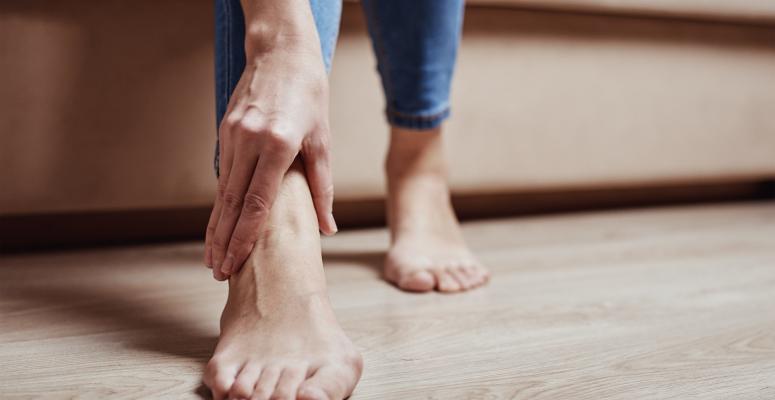
Any sort of foot pain can be frustrating, especially if you have an active lifestyle or you’re constantly on your feet for long periods of time due to your job. Plantar fasciitis is the most common cause of heel pain among adults, with 1 in 10 people developing the foot condition in their lifetime.
It’s most common in people between the ages of 40 and 70 who are active in their day-to-day lives, though it’s a bit more common in women than men.
What is plantar fasciitis?
Plantar fasciitis is a foot condition that occurs when the plantar fascia becomes inflamed. The plantar fascia is a ligament that connects the front of your foot to the heel.
The heels of your feet undergo quite a bit of wear and tear throughout your day-to-day life, and sometimes that strain becomes just a bit too much for the plantar fascia.
This foot condition is the result of overuse and overstretching of the plantar fascia. It can result in quite a bit of discomfort as time goes on, ranging from a mild ache to a sharp pain. It can often feel like a burn or ache starting at the back of the heel and extending outward to the bottom of your heel.
While pain is the only true symptom of plantar fasciitis, it can flare up in different ways, varying from person to person. The pain is often noticeable after strenuous exercise, climbing stairs or long distances of walking, but not during the actual physical activity.
What is cupping?
Physical therapy is one of the most effective forms of treatment for a variety of foot conditions, including plantar fasciitis. A technique that may be used to treat plantar fasciitis by a physical therapist is cupping.
Cupping is a physical therapy technique that uses heated cups to create suction on the skin, creating negative pressure. This results in the tissue swelling up and increasing blood flow, allowing toxins to be taken out of the nearby tissue, relieving inflammation, pain and muscle stiffness.
Not only is cupping known to be relatively painless, it has actually been called relaxing by physical therapy patients.
4 types of cupping
Cupping is a broad term for the method, as it always involves suction through cups, but there are a few different cupping techniques that can provide pain relief for conditions like plantar fasciitis.
The four types of cupping are:
- Dry cupping — The cups are used either at rest or while being moved around the skin.
- Wet cupping — The cups are left on the skin for about three minutes. Once removed, the therapist makes tiny cuts on the area using a scalpel. They will then use the cups to vacuum out a tiny quantity of blood.
- Oil cupping — Massage oils are applied to the skin before the cups are placed and moved around the skin.
- Flash cupping — The cups are repeatedly moved on and off the skin in quick succession.
Using cupping as a plantar fasciitis treatment
Cupping is often used on large spans of skin, such as the back, but it can be utilized in smaller areas on the body as well, such as the feet or face.
Cupping, specifically dry cupping, has been shown to help relieve some of the ache that can stem from plantar fasciitis. The increased blood flow can reduce the inflammation of the plantar fascia and alleviate the pain you may be feeling on the bottom of your foot. Cupping can also help your body heal faster, reducing the recovery time after plantar fasciitis flare-ups.
While it can’t cure the painful foot condition of plantar fasciitis, cupping can assist in pain management when paired with other physical therapy treatments, such as a personalized exercise plan and a gait assessment.
Alliance PTP is ready to help you find top-notch PT for cupping to treat plantar fasciitis
At Alliance Physical Therapy Partners, we’re proudly bringing together physical therapy practices across the country to help people get the high-quality PT they need.
Want to see a physical therapist in person? We can put you in touch with an Alliance PTP partner that’s close to you and that can help you address plantar fasciitis with cupping and other beneficial PT methods.
Not keen on in-person PT sessions or not close to an Alliance PTP partner? No worries. We also offer effective and affordable virtual physical therapy through our Agile Virtual Physical Therapy platform.
Come find help for your injury or chronic condition today!
Get Help at a Location Near You
